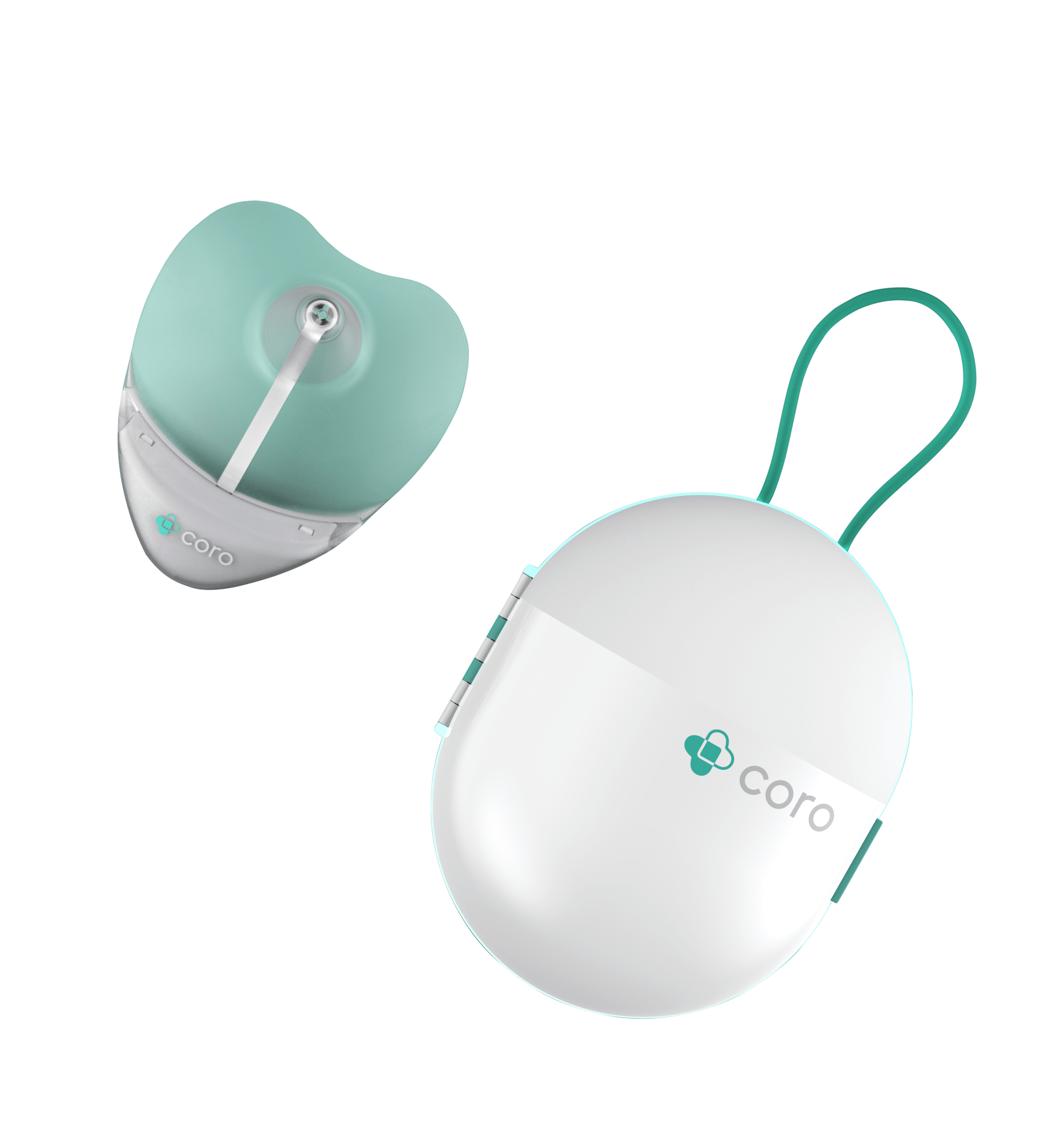More women are starting to breastfeed. More supports are available, culturally we are shifting.
With all the advances in technology and medicine, there is no method to accurately and reliably measure milk supply in real time.
Until now… until Coro.

More women are starting to breastfeed. More supports are available, culturally we are shifting.
With all the advances in technology and medicine, there is no method to accurately and reliably measure milk supply in real time.
Until now… until Coro.


Coro is a revolutionary nipple shield with inbuilt flow measurement that transfers data to an app.
It is the only product on the market giving accurate, precise, and real-time data.
We want to provide women with accurate evidence-based information, so that they can make informed choices around breastfeeding.
When pregnant, I knew I wanted to give breastfeeding a go. When my son was born he was tiny, (less than 2.3kg at full term!); weight gain suddenly became very important. The only way to check was week to week weigh in and pre- and post-feed weight checks. Waiting for results was extremely stressful for me and it was immediately clear that pre- and post-feeds weights varied wildly with little accuracy. My husband Jamie and I searched the market but no product existed to tell me how much breastmilk my son was getting, I needed immediate and accurate information!
Jamie coincidentally had worked on flow monitoring in another sector; he had an idea of a groundbreaking technology that could be the answer. Rosanne, over many late dinners, listened to us and noticed many other friends with similar issues, we had a vision, saw an opportunity and an idea was born…
Up until the last 20 years, pre and post feed weighing and estimating the volume of milk transferred was the common practice. This requires a high spec expensive scales and the reliability/accuracy is uncertain. Having considered the research on shield use, the potential pros and cons and recognising how commonly used modern shields have become, the solution was clear.
“Breastfeeding is one of the most effective ways of ensuring child health and survival.”
If breastfeeding rates were increased to recommended levels, a staggering 820,000 child lives would be saved every year, (Lancet study).
For the child, breastfeeding reduces the risk of infection; breastfeeding protects against ear, throat, and sinus infections well beyond infancy.
Adults who were breastfed have a decreased odds of type 2 diabetes and of being overweight/obese.
Breast feeding is associated with a reduced rate of both breast and ovarian cancer in the mother.
If exclusive breastfeeding rates increased by just 10% this would mean an annual saving of:
… all saved by reduced cost of treating childhood disorders!!
Annually, studies estimate a $302 billion loss through NOT breastfeeding
Breastfeeding is a topic of immense importance when it comes to the health and well-being of infants. However, recent data paints a grim picture of breastfeeding rates on a global scale. Here, we will delve into the statistics from Ireland, the UK, and Europe to understand the challenges faced in promoting and sustaining exclusive breastfeeding.
Breastfeeding Rates in Ireland:
When the Growing Up In Ireland study was published, rates of exclusive breastfeeding in Ireland were 47% upon leaving the hospital but had dropped to 15% at 6 months. More recent data suggests that 30-35% of babies across Ireland are receiving any breast milk at 3 months of age. Unfortunately, more up to date information on exclusive breastfeeding rates is not available.
Breastfeeding Rates in the UK:
Moving on to the United Kingdom, we observe a slightly more positive trend. Sources that are now outdated suggest that 81% of mothers embark on the journey of breastfeeding. More recent data reported by the UK government statistics on breastfeeding shows that 32% of babies in the UK are exclusively breastfed at 2 months, and 48% of babies receive some breast milk.
The Global Scenario:
Data collected between 2006 and 2012 by the World Health Organization (WHO) reported Europe as the continent with the lowest breastfeeding rates. Only 12% of infants across Europe were exclusively breastfed during their first six months of life vs 43% in Southeast Asia. In the US, breastfeeding rates are higher with data collected in 2020 showing 50% of babies were exclusively breastfed at 2 months and 75% were receiving some breast milk. At 6 months of age, exclusive breastfeeding rates were 25%, and 58% of babies were still receiving some breast milk. However, Australia has even higher rates of breastfeeding with recent data reporting 74% of babies at 2 months and 38% at 6 months were exclusively breastfed. Check out our blog post on global breastfeeding rates for more information.
Conclusion:
The global challenge of low breastfeeding rates demands immediate attention and action. From Ireland’s struggles with diminishing rates to the UK’s concerning drop-off, and the overall disconcerting scenario in Europe, it is evident that efforts must be intensified to support and promote breastfeeding. Addressing the perception of inadequate milk supply, enhancing support systems for new mothers, and raising awareness about the benefits of breastfeeding are crucial steps forward. Only by working together can we overcome these challenges and strive for healthier and happier outcomes for our infants.
Firstly check if Bluetooth and Location Services are enabled and working on your mobile phone.
Wash and dry Coro before returning it to its Pod, allowing it to reset. Air drying is preferred but dabbing the connectors with a soft cloth or tissue also works.
Always make sure Coro is sufficiently charged before use.
